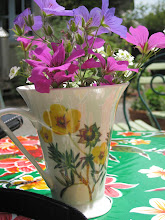The Library of Congress has digitized selected newspapers and a search may be made at Chronicling America.
The following add was in the November 12, 1889 issue of the St. Paul Daily Globe:
Lost and Found.
Cow Lost—Lost since Nov. 6, 1889, one red cow with white spots on both flanks, with horns turn in. Finder will please send word to Mrs. P. Hogan, 755 Sylvan st., city.
The other story was found the old fashioned way--by cranking through pages of microfilmed newspapers at the Minnesota History Center.
Cow Walked Her Way Back Alone from St. Paul to St. Thomas
By Win V. Working
It’s a shame to start this story with a hackneyed reference to Mrs. O’Leary’s cow and the Chicago West St St. Thomas St. Thomas
“I was only a young gaffer at the time, but I remember the incident distinctly and can vouch for the facts stated. We came here about 60 years ago and one fall not long after we had settled on the farm father sold a cow to a man named Donovan. He got $40 for her. She was a fine cow, red in color, but only a scrub, of course. We needed the money and had more cows. Anyway, Donovan led the cow to Belle Plaine and there loaded her in a wagon or truck drawn by oxen. At Jordan he picked another cow and took both to West St. Paul
“Our cow had had a calf and seemed contented in her new home. But one day, along about the first of June, both cows broke out of the pasture and disappeared, leaving the calf, which was probably tied up, behind. Donovan hunted for the cows high and low and decided they might have fallen in the river. But he write to us to learn if we had seen anything of the cow, and we sent word back that we had seen no sign of her. There the matter ended for the time being.
“Then along in the later part of August—I know we had our harvesting and stacking done—we happened to look in the barnyard one morning and there was our cow. She had a bell on and her udder was full. We finally decided that she had just wandered away and had stopped at different farms, going in at night and being milked with the other cows. Farmers along the way had probably milked her because they saw that she was fresh and had a full udder. Any sensible farmer would do that. Then she likely wandered on until she got to our place. She was nearly three months on the way, and, of course, we don’t know that she really started for home. She may have simply drifted along until she got here. But the fact is, she did get back home all by herself, all the way from West St
“We wrote to Donovan and he told us to keep the cow awhile. In October he came and got her and that was the end of the cow incident. But a good many people have found it difficult to believe the story and I am glad to have an opportunity to make public the real facts, so that people will not think we had been trying to put something over all these years.”
The Whalens came to Minnesota from Michigan Portage Ireland St. Thomas
The Whalens farmed with oxen and lived in a log cabin. There were seven children when the family came to Minnesota St. Paul St. Paul county Cork and the rich, charming brogue of old Ireland
The elder Whalen died in 1880 and his widow’s death occurred 14 years ago. Mr. and Mrs. Thomas Whalen have three children, all boys—James, John and Thomas. They live at home and operate a farm near St. Thomas
“Times have changed since I was a lad here,” Mr. Whalen mused. “it was a wild country then, but all the new improvements have come right into our neighborhood. The news comes in by radio and every little while an airplane passes overhead.” “Ah, yes, there have been changes,” he added as he shook his grey head. But Mr. Whalen and his good wife both chuckled heartily as amusing incidents were recalled and gave evidence that they have not been cheated of their share of happiness, which by the way, they found for themselves.—Midland Feature Service.
Belle Plaine Herald, 19 February 1931

No comments:
Post a Comment